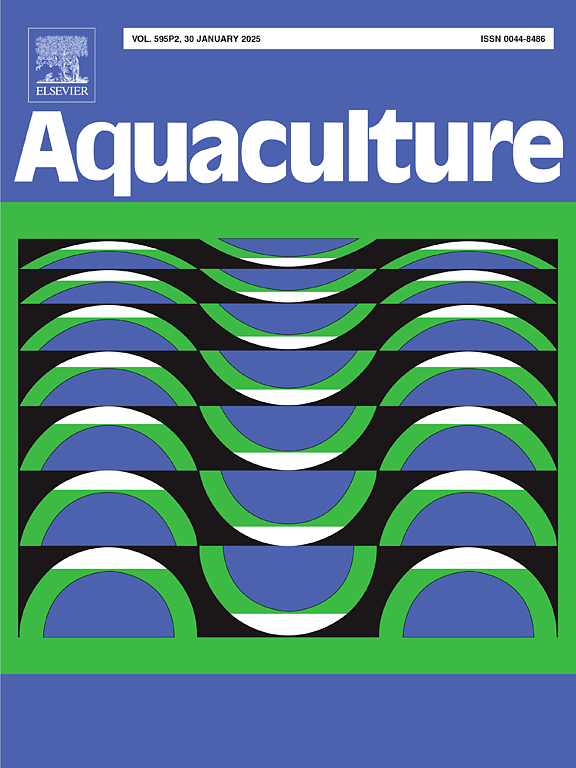Multi-omics reveal the effect of different dietary plant protein sources on the microbiota-gut-digestive gland axis of abalone Haliotis dicus hannai
IF 3.9
1区 农林科学
Q1 FISHERIES
引用次数: 0
Abstract
Current research on the nutritional functions of plant proteins in abalone primarily focuses on fishmeal replacement, while systematic investigation into the differential effects of various plant protein sources under equivalent fishmeal conditions remains scarce. The effect of dehulled soybean meal (DSM), soy protein concentrate (SPC) and corn gluten meal (CGM) on abalone H. discus hannai were evaluated through 16S rRNA, transcriptomics and metabolomics in the present study. The core gut microbiota of abalone varied among the different diet groups (DSM, SPC and GCM): Mycoplasma (57.51 %, 64.39 %, 70.23 %). Multi-omics integrative analysis indicated that abalone fed with the SPC diet effectively activated nutrients metabolism and amino acid biosynthesis via microbiota -gut-digestive gland axis. Abalone fed with the SPC diet had the lowest chewiness, gumminess and hardness of muscle. Moreover, abalone fed with the DSM diet significantly increased the abundance of Bacteroidetes, which significantly impacted the glycolysis/gluconeogenesis metabolism through the microbiota-gut-digestive gland axis. In contrast, the CGM diet led to a significant changes in the gut microbiota of abalone, characterized by an increased abundance of Marinifilaceae and Bacteroides, while the abundance of Proteobacteria decreased. This microbial change was associated with reduced activity of the gut digestive enzyme pectinase, ultimately affecting the efficiency of nutrient absorption. In addition, there was a correlation between gut microbial abundance, gut enzyme activities and cell-free hemolymph metabolite content, which might be the reason for the difference in utilization of different plant protein sources by abalone. These results light the functional interaction between the gut milieu and the digestive gland axis under the efficacy of different protein sources.
求助全文
约1分钟内获得全文
求助全文
来源期刊

Aquaculture
农林科学-海洋与淡水生物学
CiteScore
8.60
自引率
17.80%
发文量
1246
审稿时长
56 days
期刊介绍:
Aquaculture is an international journal for the exploration, improvement and management of all freshwater and marine food resources. It publishes novel and innovative research of world-wide interest on farming of aquatic organisms, which includes finfish, mollusks, crustaceans and aquatic plants for human consumption. Research on ornamentals is not a focus of the Journal. Aquaculture only publishes papers with a clear relevance to improving aquaculture practices or a potential application.
 求助内容:
求助内容: 应助结果提醒方式:
应助结果提醒方式:


